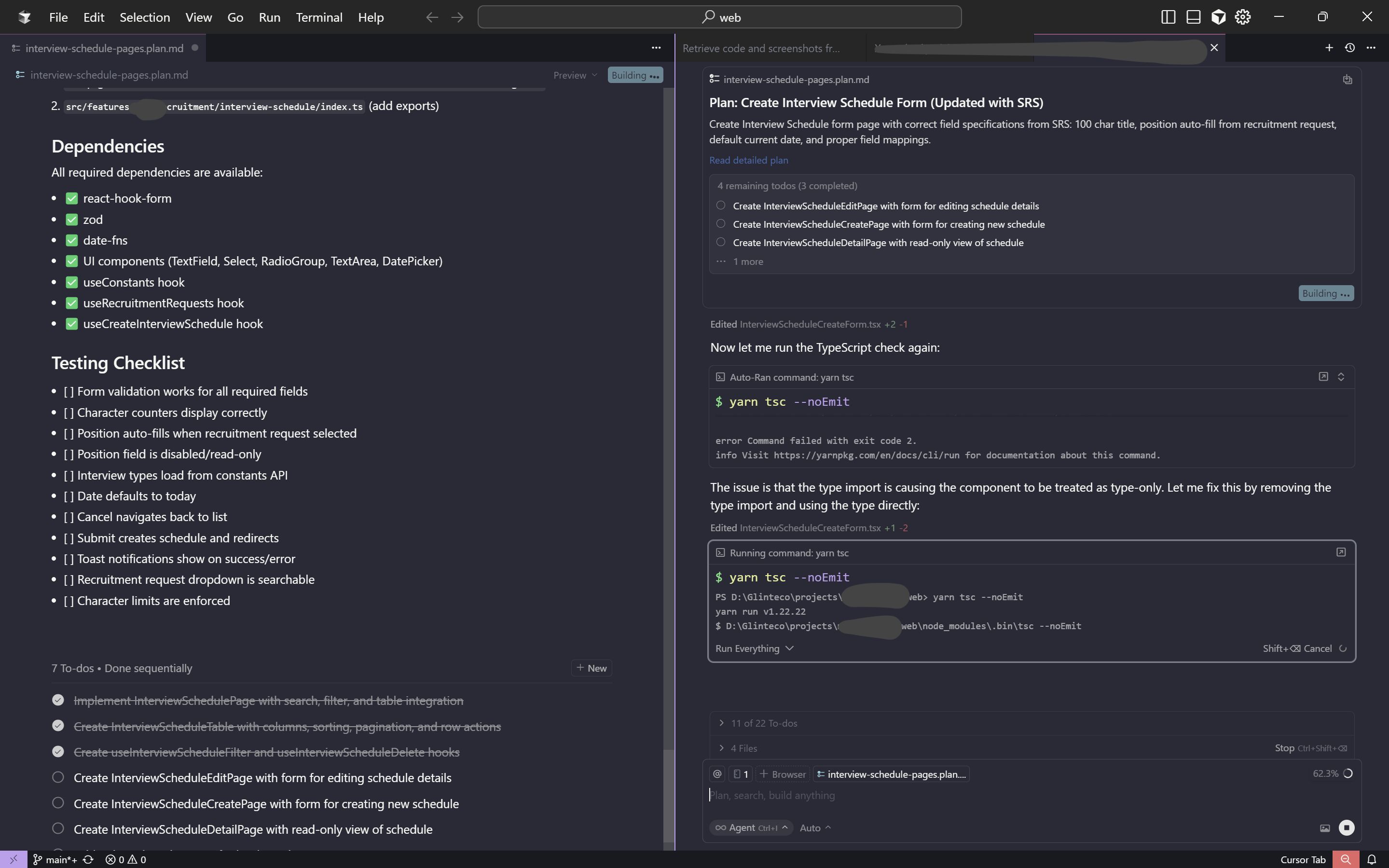Coding by Conversation: Top 5 AI Tools Startups Are Using to 'Vibe Code' Today
By khoanc, at: May 16, 2025, 2:08 p.m.
Estimated Reading Time: __READING_TIME__ minutes


Introduction: The Art of the Vibe
In our previous post, we dove into the intoxicating promise of Vibe Coding: the ability to conjure functional software from pure conversation, bypassing the friction of traditional development. While we sounded the alarm on the architectural pitfalls, the "Context Collapse" and the "Hallucination Cascade" - the underlying technology is an undeniable game-changer.
The real shift isn't about replacing developers; it’s about giving them more power - more time. Vibe Coding, when channeled by human expertise, is the fastest path from intention to iteration.
For startups, the key is knowing which tools offer the most velocity and, more importantly, understanding the crucial human oversight needed to prevent those tools from building a brittle, unsustainable product.
Here are the Top 5 AI Tools startups are using today to "Vibe Code," and the specific ways they must be managed to ensure your speed doesn't compromise your stability.
The Top 5 Tools Channeling the Startup Vibe
The best tools are those that blend the powerful language-to-code generation of Large Language Models (LLMs) with deep integration into the developer's workflow.
1. Lovable: The Accessible Full-Stack Prototyper
| Core Function | Primary Startup Benefit |
|---|---|
| A browser-based AI platform that generates full-stack web applications (UI, database, routes) from a simple description, democratizing MVP creation. | Democratization & Fast MVP: Enables non-technical founders or product managers to build and deploy a functional application in days. |
The Use Case & The Risk A startup used Lovable to generate the entire backend for a viral B2C waitlist tracker. The application handled initial traffic beautifully, but the auto-generated database lacked proper indexing and normalization. This design caused massive latency and service degradation during peak registration events
-
The Expert Solution: The core business logic must be preserved, and the database refactored into a normalized, indexed schema to ensure a sustainable foundation that can handle massive load.
2. Cursor: The Conversational IDE
| Core Function | Primary Startup Benefit |
|---|---|
| An AI-native code editor (built on VS Code) that uses chat to perform full-file editing, codebase-wide Q&A, and natural-language refactoring. | Pure Velocity: Developers spend less time searching, navigating, and performing repetitive edits, dramatically improving day-to-day productivity. |
The Use Case & The Risk A development team used Cursor to migrate a complex, legacy fintech transaction ledger from an older language version to a modern one (ex: Python version 2.7 to 3.11). While the AI translated 95% of the code, it introduced a subtle floating-point precision error in a core calculation that was missed because the existing unit tests were insufficient for the edge case.
-
The Expert Solution: AI-generated output must be treated as a highly efficient first draft. A full suite of automated integration and end-to-end tests must be mandated before commitment to ensure reliability.
3. V0 by Vercel: The Conversational UI Generator
| Core Function | Primary Startup Benefit |
|---|---|
| A dedicated tool for instantly generating high-quality UI components (React/Tailwind) from simple text prompts. | Low-Friction Design: Accelerates the front-end design process, letting non-technical founders dictate the UI look and feel and get instant, modern code. |
The Use Case & The Risk A client used V0 to generate the front-end components for a high-traffic e-commerce checkout flow. It was visually perfect, but the generated Tailwind classes resulted in insufficient color contrast for text, making the application fail WCAG accessibility standards and exposing the company to potential compliance issues.
-
The Expert Solution: Quality assurance must be layered over generated code, including automated checks for WCAG accessibility standards and explicit cross-device responsiveness tests to ensure accuracy.
4. Windsurf (formerly Codeium): The Agentic Workflow Assistant
| Core Function | Primary Startup Benefit |
|---|---|
| An agent-native IDE that can orchestrate multi-step, multi-file tasks (e.g., "Add user authentication to the API and update all client calls"). | High-Level Automation: Enables single-prompt execution of complex features that normally require hours of manual file-hopping. |
The Use Case & The Risk An agent was tasked with adding multi-factor authentication to a major SaaS CRM API. It completed the work but failed to correctly handle error paths, accidentally creating a silent backdoor by logging sensitive session tokens in plain text during failed requests, leading to a system-wide security flaw.
-
The Expert Solution: A "Human-in-the-Loop" validation model is required, where generated code is flagged for a security and best-practices diff-check to guarantee a reliable and secure outcome.
5. Claude Code (or similar specialized LLMs): The Reasoning Partner
| Core Function | Primary Startup Benefit |
|---|---|
| LLMs known for superior code reasoning, capable of explaining complex logic, generating detailed test cases, and drafting comprehensive documentation. | Learning & Governance: Helps developers understand complex legacy code and ensures the product is well-documented for future teams. |
The Use Case & The Risk A developer used Claude Code to document a critical real-time financial bidding engine microservice. The generated technical documentation was perfect, but it lacked the crucial human context: the fact that the service needed to be redeployed with zero downtime using a blue/green deployment strategy, a crucial operational step the AI didn't know.
-
The Expert Solution: Documentation must extend beyond technical summaries to include Standard Operating Procedures (SOPs) and crucial human context like "Owner" and "Risk Level" to secure long-term sustainability.
The Glinteco Commitment: Coding with a Strategy
Vibe Coding is a gift of velocity to the startup ecosystem, drastically reducing the time and cost to achieve Product-Market Fit.
But speed without structure is a controlled crash. A founder's most valuable asset is their codebase. To rely solely on the "vibe" is to build on sand.
Glinteco is your strategic partner in this new era. We enable exponential speed by enforcing structure through our core value proposition:
| Our Layer | The Promise | How We Deliver It |
|---|---|---|
| Reliability | Your app won't crash when you hit scale. | Mandatory integration testing and security review for all AI-generated code. |
| Accuracy | The application does exactly what you intend, every time. | Automated performance checks, cross-device QA, and WCAG compliance validation. |
| Sustainability | Your codebase can grow and adapt for the next decade. | Enforced architectural standards, documentation as code, and clean, decoupled API layers. |
Here are few screenshots of AI tools that we are using:
Glinteco backend team is working with Cursor AI

And Visual Studio AI



![[One Package Per Day] Django Simple History](/media/filer_public_thumbnails/filer_public/5e/3c/5e3cf4eb-38c3-4def-8cf3-f7ec6c76cd1c/one_package_per_day_-_django_simple_history.png__400x240_q85_crop_subsampling-2_upscale.jpg)


